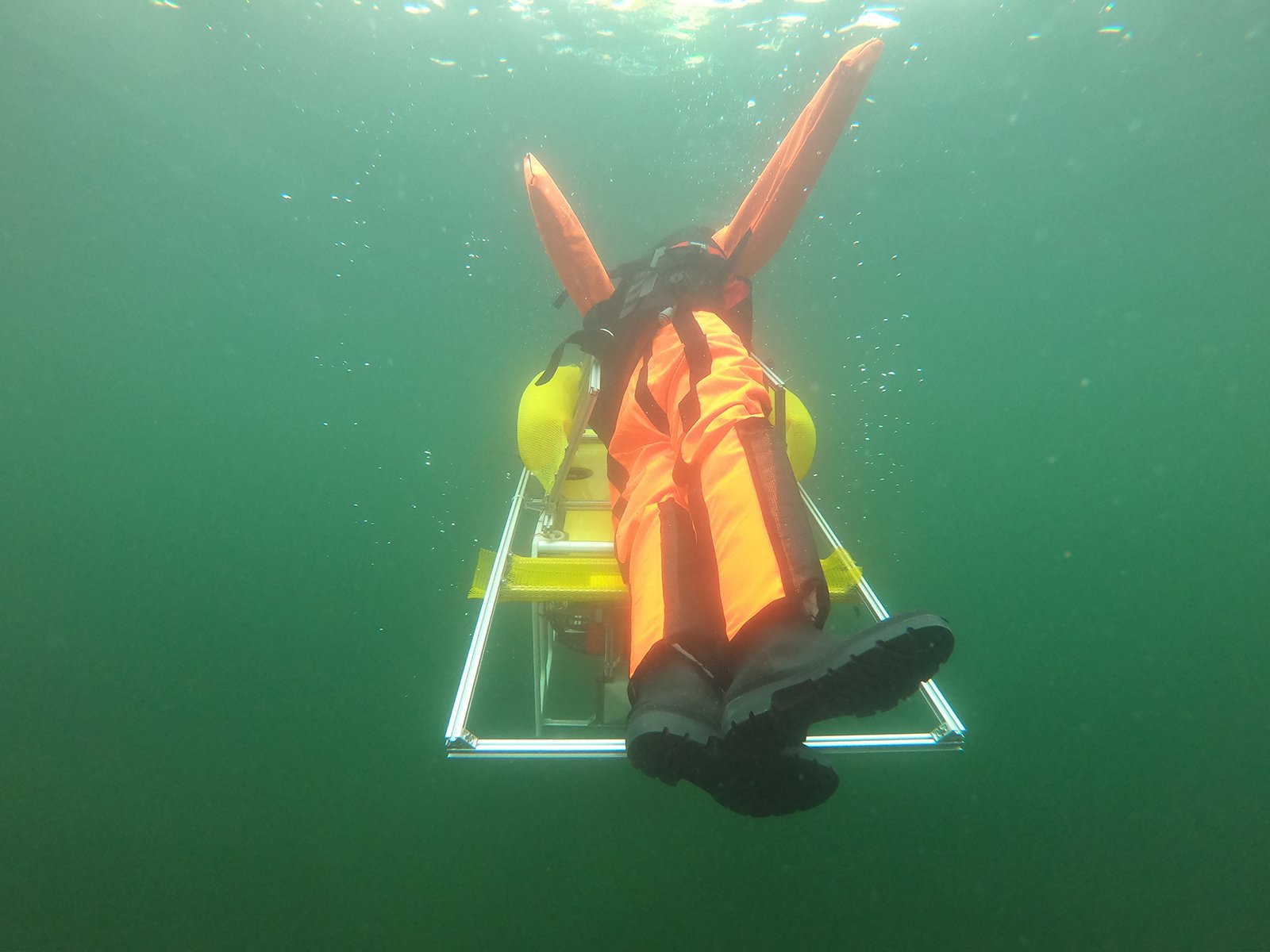
According to the German Lifesaving Society DLRG, nearly 420 people drowned in Germany in 2019. Most fatal accidents occurred in inland waters such as lakes, ponds or rivers, but people also lost their lives in swimming pools. The reason is that there is a lack of trained lifeguards, which has even led to swimming pools being closed. Nor is there any improvement in sight, because there is also a shortage of young talent. A swimming rescue robot, which is intended to support staff in emergencies in the future, could be a way out of this plight. That’s why a team of researchers from the Fraunhofer Institute of Optronics, System Technologies and Image Exploitation IOSB in Ilmenau, Germany, has developed such an underwater vehicle with the help of the Halle e.V. water rescue service.
“There are typical body positions which indicate that someone is in danger,” explains computer scientist Helge Renkewitz, who led the completed project in close collaboration with Wasserrettungsdienst Halle e.V.. For this purpose, surveillance cameras were mounted on the ceiling of the hall that register the movement patterns and position of the drowning person in the pool and send the coordinates to the robot. The robot then releases itself from a docking station at the bottom of the pool and travels to the specified coordinates. There, with the help of cameras, it locates the person in danger and transports him or her to the surface of the water. A fixation and catching device ensures that if a person is unconscious, they will not slip down when it rises to the surface. According to the scientists, this device can also be mounted on other underwater vehicles.

Tests fully successful
At swimming lakes where there is no ceiling to mount surveillance cameras, flying drones and zeppelin systems take over. “Drones and advertising balloons can easily be equipped with cameras,” says Renkewitz. Because lake water is murky, unlike in swimming pools, the underwater vehicle must be equipped with acoustic sensors instead of optical ones. This way the position and orientation of people can be determined using the echo of the sound waves and the robot can autonomously navigate to the target person and pick them up.
In open-water tests in the Hufeisensee lake near Halle (on the Saale River), the researchers have already proven that this also works perfectly in practice. Here, the rescue robot picked up an 80-kilo dummy at a depth of three meters, secured it, brought it to the surface within a second and then took it by the shortest route to the shore where the rescue forces were waiting. They are alerted as soon as the robot is informed of an emergency. “The complete rescue operation took a good two minutes,” says Renkewitz. “Casualties must be resuscitated within five minutes to rule out permanent damage. We were able to work within this critical time span without any problems.”

Futuristic appearance
The current unit is about 90 centimeters long, 50 centimeters high and wide and is equipped with batteries, propulsion, cameras, and optical and navigation sensors. But future units are expected to be smaller, lighter and less expensive than the current prototype. Scientists also plan to build different versions for use in swimming pools and inland waterways. To that end, the robot is also expected to change its appearance and have the streamlined design of a ray.
The aquatic robot already has a patent pending and modified versions could be used for other tasks such as offshore and dam inspections, or on fish farms to monitor fish health. “The range of applications is broad; our underwater vehicles are also suitable, for example, for detecting and inspecting archaeological finds at the bottom of bodies of water,” says Renkewitz.
The project was funded by the German Federal Ministry for Economic Affairs and Energy BMWi.
Cover photo: When being carried to the water surface, the dummy remains secured to the rescue unit during the test in Hufeisensee. © S.Thomas (Halle Water Rescue).
Also interesting:
Wireless water robot cleans water and takes samples, too
Aquatic robot mimics motion of tuna to break speed record






